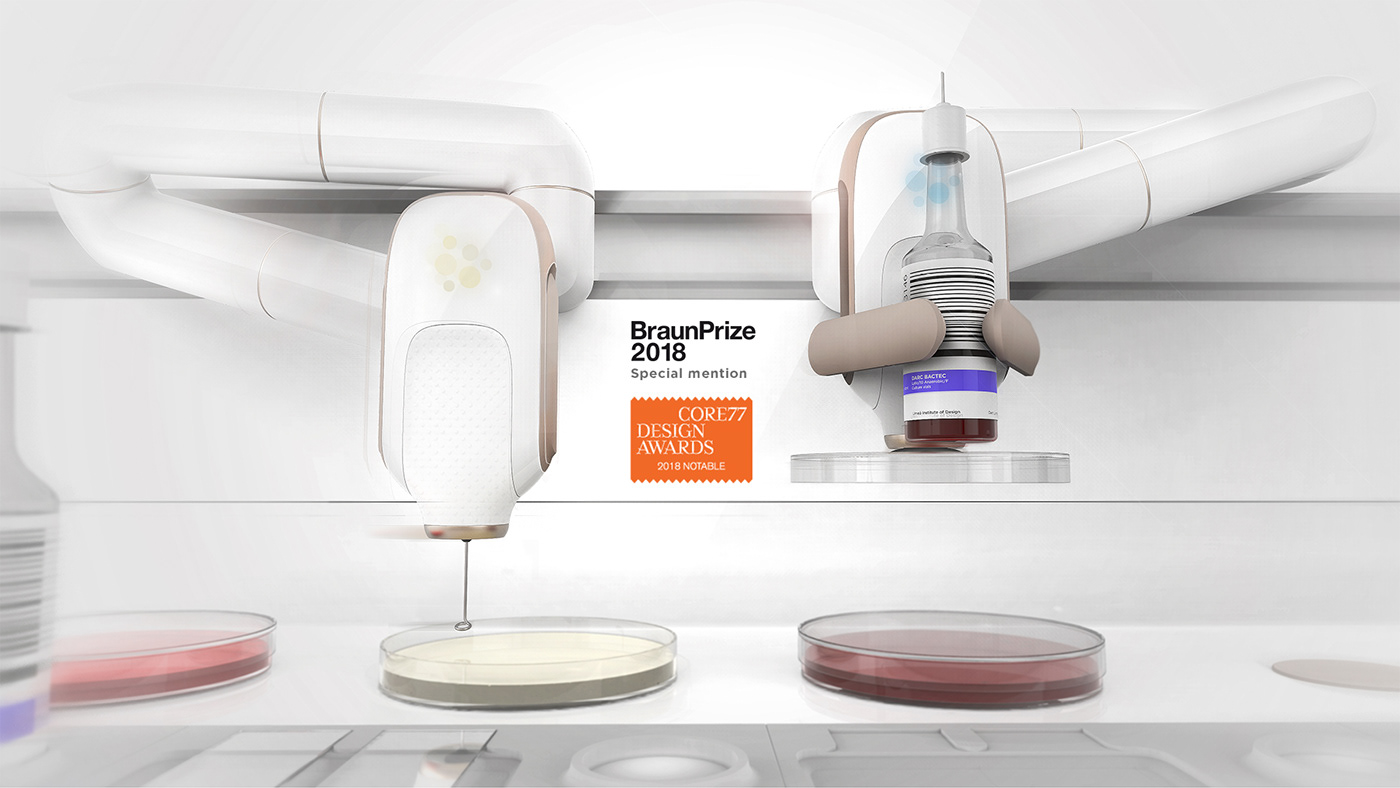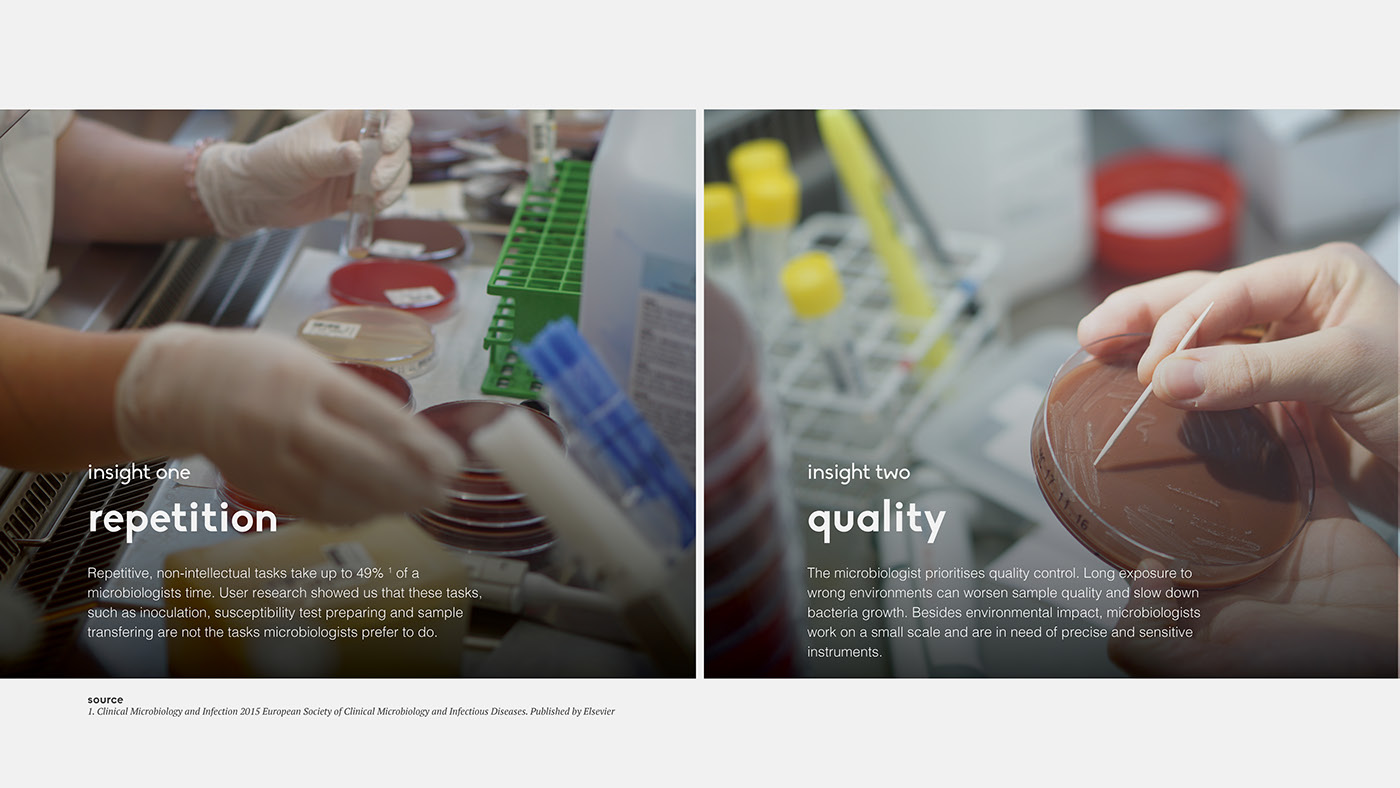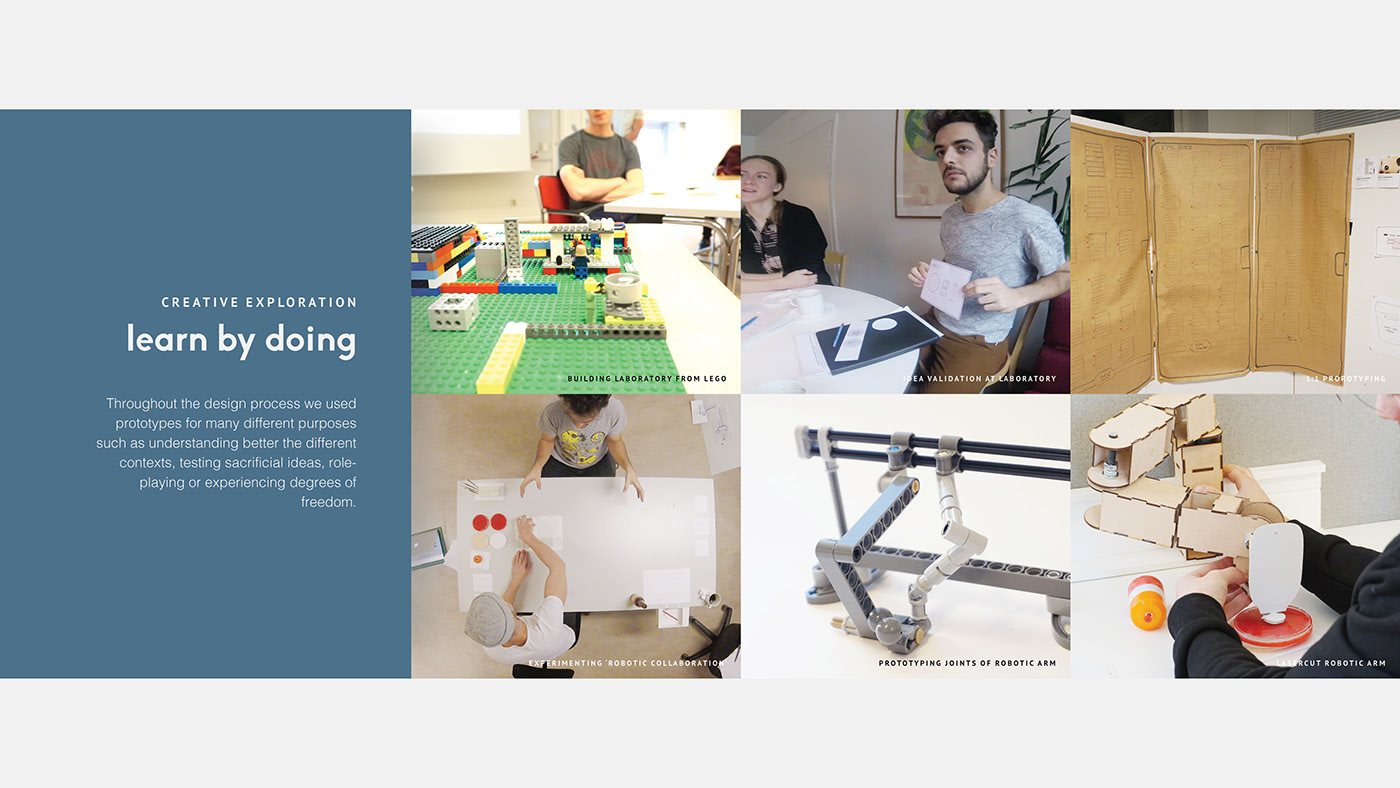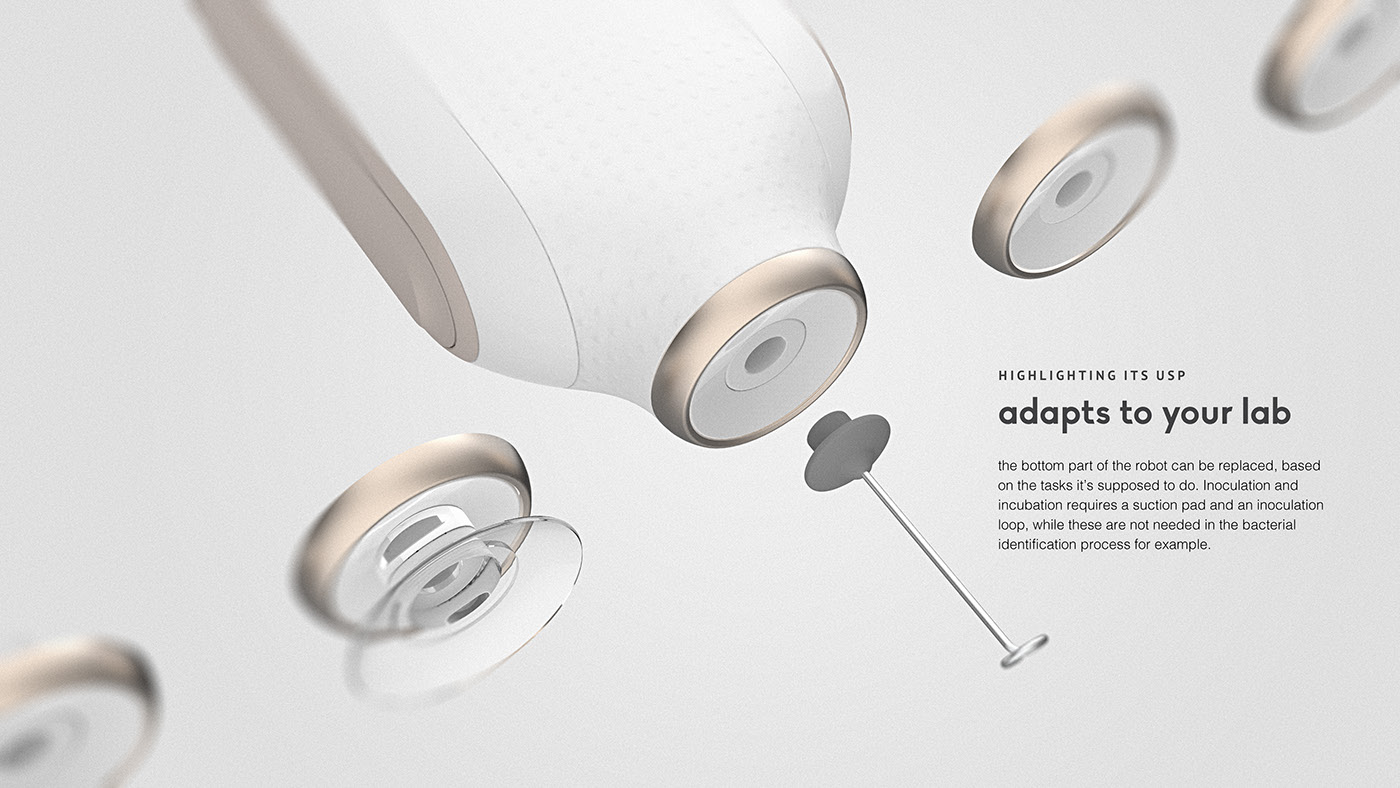









Introducing Colab
Colab is a workstation for clinical microbiologists that targets the issue described above in the laboratory context. Our desk and field research showed us that up to 49% of a clinical microbiologist’s time in the laboratory is spent on repetitive tasks that do not require the number of intellectual capabilities clinical microbiologists have. This workstation allows them to reduce the number of repetitive tasks and improve the overall quality during inoculation. Colab also gives microbiologists a better insight into bacteria growth during the incubation phase with the help of AI. The Time To Result (TTR) will be reduced and the overall quality of a sample will be improved, which not only benefits the patient due to quicker diagnosis but also allows the microbiologists to focus on tasks they love to do within their field.


Colab's workspace
The workspace of Colab is the area where the two collaborative robots, Zack & Sarah, interact with the clinical microbiologists. We were inspired when playing a game of ping pong and used this ‘back and forth’ as a leading principle for the interaction between the microbiologist and Zack & Sarah. The clinical microbiologist prepares a tray, fills it with a sample, a number of agar dishes and a microscopic slide. Once this is done, the microbiologist presses a capacitive sensor, which tells Zack and Sarah to pick up the prepared task and start the inoculation process. The microbiologist has the possibility to decide which and how many agar plates he or she wants to use during this process and has the ability to personalise rather than standardise their process.

Speeding up the process
While Zack and Sarah are inoculating the agar plates, the microbiologist can prepare the next tray, fill it up with agar plates, blood/urine/feces and a microscopic plate and press on the capacitive sensor. This tray will be placed in the queue and completed by Zack and Sarah when they are done with the first time. The process of inoculation will speed up tremendously, which allows a laboratory to increase their productivity and capabilities adequately.


Collaborative robotics - Zack & Sarah
Zack & Sarah are the two collaborative robots that reduce the amount of repetition on a daily base for microbiologists in their laboratory. This duo has a friendly character, moves on a rail and has six degrees of axial movement. This creates a flawless, smooth and elegant movement of the robots. Zack and Sarah can pick up agar dishes, drip blood on the agar dishes and microscopic plates, inoculate (the process of spreading and streaking a liquid on the agar dish) and transport them to the incubation area. This duo is designed in such a way it invites you to work together with them effectively side by side, rather than in the background.




Incubation that improves time efficiency
As mentioned before, once an agar dish is inoculated, it’s transported to the incubation area. The function of an incubator is to offer an environment in which a bacteria or fungi can grow as quickly as possible. Colab has three incubators with different conditions/environments. Every agar plate that has been inoculated will be placed in one of the incubators. During our desk and field research, we found out that plate reading takes up to 25% of a microbiologists time. By implementing a system that simply takes photos of these agar plates on set intervals and compares the photos, growth can be identified. A microbiologist will be notified once there is enough bacterial growth. If there is not enough growth, the agar plate will be discarded and removed from the incubator. This way the microbiologist only looks at samples that have sufficient growth, rather than the ones without enough growth, and are ready for the next phase; susceptibility testing.











